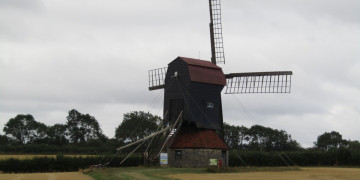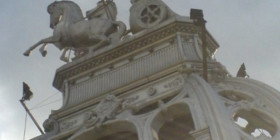Conservation and restoration policy
Our ethical and forward-thinking conservation policy outlines the core principles guiding Dorothea Restoration's approach to architectural metalwork conservation.
(revised November 2011 by John Wallis)
Definitions
Object means a machine, a structure, an instrument or other piece of man-made equipment.
Historic importance means aesthetic, scientific, technological or social value for past, present or future generations.
Material is the physical substance of which an object is made.
Preservation means maintaining the materials of an object in their existing state and halting deterioration.
Restoration or Repair means returning the existing materials of an object to a known earlier state with minimal introduction of new material.
Reconstruction means returning the existing materials of an object to a known earlier state involving more than the minimum amount of new material.
Maintenance means the continuous care of an object without alteration of its materials.
Adaptation means the modification of an object to fulfil a new compatible use.
Compatible use is one which involves no change to the historically important features of an object. In less than ideal circumstances, a compatible use may be one which involves reversible or minimal changes.
Conservation refers to all the processes of preserving objects of historic importance, such as preservation, restoration, repair, maintenance, and, where of an acceptable standard, reconstruction and adaptation.
Historic Importance
This must be precisely defined as the basis for selecting conservation processes. An object's aesthetic, scientific, technological and social merit
is assessed in terms of:
- Age
- Uniqueness
- Rarity as a survivor of its type.
- Evidence of past style, design, innovation, usage of materials, construction practice, etc.
- Spiritual, political or cultural significance for a particular group in society.
- Exceptional aesthetic qualities of form, colour, decoration, etc, and part played in the immediate environment or landscape.
- Condition and extent of remaining original material.
- Service life -does it still perform its original operation, or can it be made to do so?
The Fundamental Aim is to Preserve
The first duty is to halt the processes of deterioration and stabilise the condition. This recognises the intrinsic worth of the object's materials, and ideally should be the limit of conservation work.
Where stabilising its condition is insufficient on its own to ensure an object's long-term survival, conservation must be selected to ensure:
- Minimal Disturbance to the object.
- Reversible Processes are used whenever possible.
These principals recognise the need to preserve the object intact as evidence for future generations.
Good Practice
The following are recommended as good practice:
Preservation processes:
- Improvement of the immediate environment (protection from the elements, packing, etc), dehumidification, and reduction of pollutants.
- Alteration/down-grading of service requirements.
- Use of replicas for working equipment.
- Relocation to a less destructive environment, if this is proven to be the only means of ensuring preservation.
- Consolidation of existing materials (only where unavoidable to ensure survival, eg, friable timberwork).
- Use of additional materials or structure, not fixed to the artefact, for additional strength or support
- Protection of surfaces by paint, inhibitors, etc.
Restoration, repair, reconstruction processes:
- Retention of as much existing material as possible, repairing and consolidating rather than renewing.
- Use of additional fixed material or structure to reinforce, strengthen, prop, tie, and support.
- Use of traditional materials and techniques provided that these can be distinguished on close inspection from originals on completion, and for years to come.
- Retention and storage adjacent to the artefact of all parts and materials that cannot be reused.
Maintenance processes:
- Periodic inspection by competent persons.
- Provision of comprehensive written maintenance schedules and operation guidelines (where appropriate)
- Selection and proper training of suitable maintenance/operation staff.
- Proper budgeting for planned short- and medium-term maintenance.
All conservation work:
- Detailed recording of the artefact before, during and after conservation work, especially by measured drawing and photographing.
- Secure and stable long-term storage of records.
- Proper specification of all stages of work following careful consideration of what is appropriate and inappropriate, on the basis of the definition of Historic Importance.














